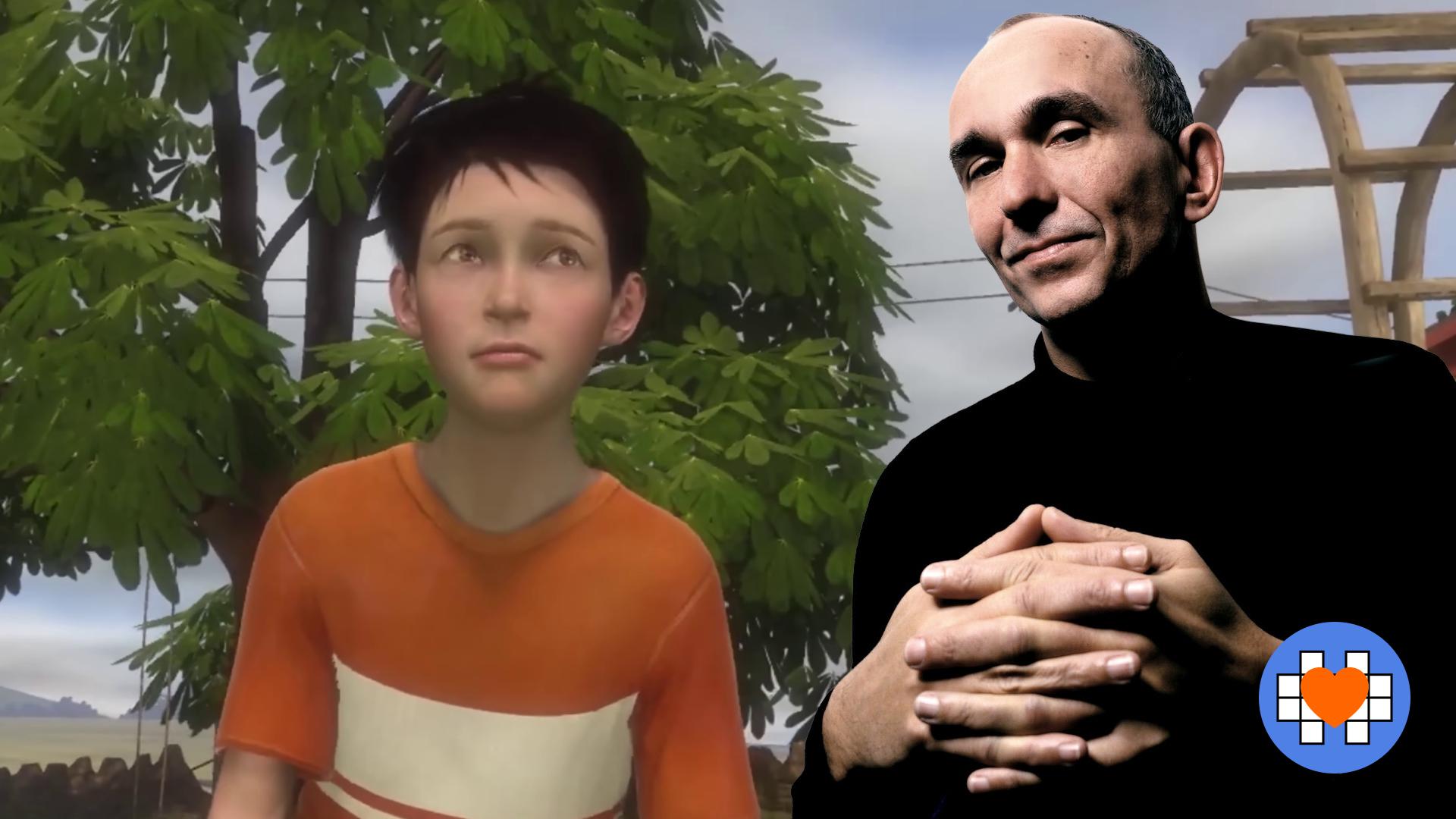
How the ambition and unique vision of Peter Molyneux’s creative mind led to two unique projects like BC and Project Milo.
Peter Molyneux represents the old-school game designer icon: heedless of limitations or audience readiness, he consistently launches visionary and truly ambitious ideas, always leading to significant evolution in the industry. During his time at Bullfrog, Peter Molyneux brought to life several important franchises, such as Dungeon Keeper and Black and White, creating the “god game” genre (titles where the player controls every single aspect of the game world, from the peoples to the world’s structure).
Throughout his career, he produced one of the most innovative Western RPGs for the first Xbox: Fable. This game placed a high emphasis on choices, particularly the player’s behavior with various characters or situations, which could literally alter the character’s appearance and the reactions of various NPCs encountered throughout the game. Over the years, Peter Molyneux has pushed towards even higher levels of ambition, sometimes proposing ideas that were “almost impossible” to realize, such as Project Milo or the almost forgotten BC.

BC, the Ancestor of Modern Survival Games
Before the launch of the first Xbox, Lionhead was working on an extremely visionary title for the time, BC. It was a survival adventure where the player, leading a tribe of primitive humans, had to survive and advance both themselves and their group. The survival system was carefully designed, with a very vast environment for the time and, most importantly, advanced AI to manage the food chain among the various species that could be encountered, such as various types of dinosaurs, other tribes, and dangerous primates.
BC was a very troubled and complex project, and the public got to know it only through articles, trailers, and a gameplay demonstration leaked shortly after; the early demos showcased various sections of exploration and hunting, depicting a living and reactive world. The sequences shown included a confrontation with an extremely aggressive T-Rex that devoured some group members. Molyneux’s characteristic design made the entire world, atmosphere, and creatures extremely menacing yet enjoyable, creating a particular contrast that generated a unique experience. BC was canceled for unspecified reasons, but the most credited causes were the studio’s focus on a more manageable fantasy title, the first Fable, and Molyneux’s overly ambitious nature. BC remains to this day a masterpiece for the ideas it could have brought to the industry, very advanced for its time.

The Post-Fable Period and the Arrival of Project Natal
After the incredible success of Fable (one of the most acclaimed action RPGs of its time, for the first Xbox), Molyneux perhaps gained too much confidence and allowed himself to be carried away by new challenges. As Fable 2 and 3 were released (excellent titles, but much debated for the exaggerated unkept promises), the author became an extremely visionary yet exaggerated type of figure. The pinnacle of his madness and genius was then reached with Project Milo, one of the most peculiar titles in development for Kinect, initially called Project Natal.
Project Milo: Molyneux’s Greatest Failure
Peter Molyneux and Xbox presented an extremely revolutionary project, just comparable to current AI technologies, which at the time were considered “science fiction.” Project Milo was a title where the player could interact in real-time through Kinect with the character of Milo, a digital boy who could recognize us and call us by name. Through the device’s microphone, it was possible to communicate in real-time, demonstrating an incredible level of interactivity. In the presentation, the tester passed a sheet with a drawing in front of the Kinect, which was then digitized into Milo’s hands, showing his reaction in real-time. Project Milo was canceled and vanished into thin air. The title, although considered fake by many players, represents a great missed opportunity to advance the industry.
Very similar titles to Milo date back to the past, particularly to Sega’s unfortunate console, the Dreamcast, with the interesting experiment Sea Man, where one could interact with a fish-human character featuring the likeness of Leonard Nimoy (Spock from Star Trek).



Another comparable title is the highly original Pokémon Hey You, Pikachu! for the Nintendo 64, playable only in Japan via microphone.
Some images from the Project Milo presentation:
The Gradual Disappearance of Authorial Vision and High-Level Madness
In recent years, the industry has shown a certain reluctance towards experimentation and gameplay evolution, focusing instead on graphics, photorealism, or standardizing game formulas. This is done to increase profits and avoid “dangerous” experimentation due to ever-rising development costs. This lack of innovation has led to a gradual “fatigue” among players, who are tired of seeing the same or very similar titles.
Authors like Kojima, Todd Howard, Cevat Yerli, Yoko Taro, Shinji Mikami, and Molyneux represent a rarity in the industry for their ability to push the boundaries towards new, unimaginable standards. As long as the gaming industry has authors worthy of this title, video games can continue to be a unique art form.